How To Chose Antioxidant Additives in UAE | Industrial Grade Chemicals?
In the heart of a rapidly industrializing region, the United Arab Emirates stands as a beacon of manufacturing, logistics, and heavy industry. From the sprawling automotive workshops of Dubai to the massive petrochemical complexes in Ruwais, the performance and longevity of machinery are paramount. At the core of this operational excellence lies a critical, yet often overlooked, component: industrial lubricants and fluids. These lifeblood substances are constantly under attack from heat, pressure, and oxygen, leading to degradation. The primary defense against this inevitable breakdown is the strategic use of antioxidant additives.
Choosing the right antioxidant additives is not merely a procurement decision; it is a strategic investment in asset health, operational efficiency, and total cost of ownership. For engineers, plant managers, and procurement specialists across the UAE, navigating this landscape requires a blend of technical knowledge and local market insight. This guide provides a comprehensive framework for selecting the optimal antioxidant additives for your specific industrial applications, with a focus on the unique demands of the UAE market.
Understanding the Enemy: Oxidation in Industrial Fluids
Before selecting an antioxidant, one must understand the problem it solves. Oxidation is a chemical reaction between industrial oil (like lubricants, hydraulic fluids, or transformer oils) and oxygen, accelerated dramatically by high temperatures and the catalytic action of metals like copper and iron. This process leads to:
Sludge and Varnish Formation: Oxidized oil molecules combine to form insoluble deposits that clog filters, narrow oil passages, and impair heat exchange.
Increased Acidity: Oxidation produces acidic by-products that corrode metal components, leading to pitting and premature failure.
Viscosity Increase: The oil thickens, increasing fluid friction, raising operating temperatures, and reducing energy efficiency.
Loss of Lubricity: The oil’s ability to form a protective film diminishes, resulting in increased wear on gears, bearings, and cylinders.
In the harsh climate of the UAE, where ambient temperatures are high and machinery often operates under continuous heavy loads, the rate of oxidation is significantly accelerated. This makes the role of a high-quality antioxidant additive not just beneficial, but essential.
A Deep Dive into the Types of Antioxidant Additives
A sophisticated selection process requires moving beyond a generic specification. Understanding the different Types of Antioxidant Additives and their specific modes of action is the foundational step in making an informed, technical choice. They are broadly classified into two primary, complementary mechanisms:
1. Primary Antioxidants (Radical Scavengers)
These additives act as the first line of defense, intervening directly in the propagation phase of the oxidation chain. They function by donating a hydrogen atom to the highly reactive peroxy radicals (ROO•), effectively neutralizing them into stable hydroperoxides (ROOH) and stopping the chain reaction from propagating further. The now-stabilized antioxidant radical does not initiate a new chain, thereby halting the degradation process.
Phenolic Antioxidants (e.g., Hindered Phenols like BHT): These are known as “sterically hindered phenols” and are highly effective at moderate to high temperatures. They are widely used due to their good solubility, low color, and overall stability without being overly aggressive. They are often the workhorse antioxidant in many industrial and automotive formulations.
Aminic Antioxidants (e.g., Alkylated Diphenylamines): Often referred to as “aromatic amines,” these are particularly robust and perform exceptionally well under very high-temperature conditions. They are frequently used in demanding applications like engine oils and compressor fluids. While sometimes prone to darker coloration, their high-temperature performance is superior.
2. Secondary Antioxidants (Peroxide Decomposers)
These additives work in a powerful synergy with primary antioxidants, providing a second layer of defense. They target and decompose the hydroperoxides (ROOH) formed during the propagation phase into stable, non-radical products like alcohols. By eliminating these hydroperoxides, they prevent them from breaking down into new alkoxy and hydroxy radicals, which would otherwise accelerate the chain reaction exponentially.
Phosphite-based Antioxidants (e.g., Tris(nonylphenyl) phosphite): Excellent peroxide decomposers that also provide a degree of thermal stability and can act as acid scavengers. They are commonly used in conjunction with hindered phenols.
Sulphur-based Antioxidants (e.g., Zinc Dialkyldithiophosphates – ZDDP, Sulphurized Phenols): These are highly effective, multi-functional additives. ZDDP, for instance, is renowned not only as a potent secondary antioxidant but also as an extreme-pressure and anti-wear agent. Sulphur-based antioxidants are particularly effective in very high-temperature environments.
The most advanced and effective formulations on the market, such as those offered by a leading Antioxidant Additives Supplier in Dubai like Rumanza Lubricants, utilize a carefully balanced synergistic blend of primary and secondary antioxidants. This combination creates a multi-faceted, robust defense system that extends the service life of the industrial fluid far beyond what any single additive chemistry could achieve.
Comparative Analysis: Primary vs. Secondary Antioxidants
The following table provides a clear, at-a-glance comparison to aid in the selection process:
| Feature | Primary Antioxidants (e.g., Phenolics, Amines) | Secondary Antioxidants (e.g., Phosphites, ZDDP) |
|---|---|---|
| Primary Mechanism | Radical Scavenger (Donates H-atom) | Peroxide Decomposer |
| Targets | Alkyl (R•) and Peroxy (ROO•) Radicals | Hydroperoxides (ROOH) |
| Best For | Stopping the chain reaction initiation | Preventing reaction acceleration |
| Temperature Performance | Good (Phenolics) to Excellent (Amines) | Good (Phosphites) to Excellent (Sulphur) |
| Pros | Effective across a wide range of conditions; Phenolics are low-color. | Very effective at high temps; Multi-functional (e.g., ZDDP provides anti-wear). |
| Cons | Can be consumed over time; Amines may cause discoloration. | Phosphites can be sensitive to moisture; Sulphur types can be corrosive to certain yellow metals. |
| Ideal Use Case | Base stabilization for turbine oils, hydraulic fluids. | High-temperature engine oils, gear oils, compressor fluids. |
Key Selection Criteria for Industrial Grade Antioxidants in UAE
Selecting the right antioxidant additive requires a systematic, multi-factor approach tailored to your specific operational context. Here are the critical, non-negotiable factors to consider:
1. Base Oil Compatibility and Synergy
The antioxidant must be fully soluble, stable, and non-reactive in your specific base oil. Incompatibility can lead to hazy oil, additive drop-out, gel formation, or a dramatic reduction in performance. A mineral-based Group I oil may require a different additive package than a fully synthetic Polyalphaolefin (PAO) or ester-based fluid. A reputable supplier will have conducted extensive compatibility testing and can provide clear guidance. For instance, the Top-Grade Antioxidant Additives from Rumanza Lubricants are engineered for specific base oil families to ensure optimal performance.
2. Application-Specific Performance Requirements
The “one-size-fits-all” approach is a direct path to equipment failure and inflated costs. The optimal antioxidant package varies dramatically by application:
Antioxidant Additives in Automotive and Transport: Engine oils require a robust system, often amine-phosphite synergistic blends, that can handle fuel soot contamination (which can deplete antioxidants), blow-by gases, and intermittent very high temperatures. Automatic transmission fluids (ATFs) need different, carefully balanced formulations to protect delicate wet clutches and seals while providing lifelong friction stability.
Turbine Oils: These fluids demand exceptional, long-term oxidation stability over extended service intervals (often 10+ years). They typically use a synergistic blend of hindered phenols and aromatic amines, formulated to have minimal impact on air release and water separation characteristics.
Hydraulic Systems: The focus is on high thermal stability and superior anti-wear performance, with a strong emphasis on preventing varnish, which is a primary cause of servo valve failure in modern high-pressure systems. Zinc-free (Ashless) antioxidants are often specified for systems sensitive to ash deposits.
Industrial Gear Oils and Compressor Oils: Exposed to high oxygen pressures, temperatures, and shearing forces, these oils need some of the most potent antioxidant systems, frequently incorporating sulphur-phosphorus chemistries like ZDDP to handle extreme conditions.
3. Operational Environment and Stress Factors
The UAE’s environment presents a unique set of challenges that must be explicitly factored into the selection. High ambient temperatures, dusty and humid conditions, and prevalent 24/7 operation cycles place immense thermal and oxidative stress on lubricants.
Thermal Stress: An antioxidant that performs adequately in a temperate, intermittent-use environment may fail prematurely here. Your selection must be biased towards chemistries known for high-temperature resilience, such as amine-types and ZDDP.
Catalytic Metals: The presence of copper and iron in bearings and gears acts as a potent catalyst for oxidation. Ask your supplier about additives that contain metal deactivators, which form a passive layer on metal surfaces, reducing their catalytic effect.
Contamination Control: The ingress of water and dust, while a maintenance issue, can also consume antioxidants and catalyze oxidation. A robust antioxidant system provides a “reserve alkalinity” or additive life to withstand minor contamination events.
4. Regulatory, Environmental, and OEM Compliance
The industrial landscape is increasingly governed by stringent environmental, health, safety, and performance standards. This includes regulations on the disposal of used oil, biodegradability, and toxicity. Furthermore, Original Equipment Manufacturers (OEMs) often have strict approval lists for lubricants and additives used in their machinery.
Environmental Regulations: Some antioxidant chemistries are more environmentally acceptable than others. For example, certain ashless antioxidants are preferred in applications where there is a risk of fluid loss to the environment.
OEM Approvals: Using an antioxidant package that helps the finished lubricant secure approvals from major OEMs (e.g., Siemens, GE, Bosch Rexroth, Caterpillar) is not just a mark of quality; it is often a warranty requirement. This de-risks your operation and ensures compatibility.
5. Technical Support and Value-Added Services: The Partner Differentiator
Perhaps the most critical, yet often overlooked, criterion is the technical capability and reliability of the supplier. The best Antioxidant Additives Supplier in Dubai will not just sell you a drum of chemicals; they will act as a technical partner and an extension of your maintenance team.
A supplier like Rumanza Lubricants distinguishes itself by offering:
Consistent, Certifiable Quality: Guaranteeing that every batch of their High-Quality Antioxidant Additives meets stringent international specifications (like ISO, ASTM) and comes with full chemical analysis data sheets, ensuring predictable and reliable performance.
Product Provenance and Purity: Providing transparent data on the origin and composition of their additives, ensuring you are not introducing harmful impurities or chlorides that could accelerate corrosion.
Local Expertise with Global Standards: Combining an intimate understanding of the local UAE industrial landscape—from the desert conditions of Al Ain to the humid coast of Fujairah—with access to global chemical technology and innovation.
Customized Formulation Support: Recognizing that each operation is unique, a top-tier supplier will work with your engineers to tailor an additive package or recommend a specific product from their range of Top-Grade Antioxidant Additives to solve your exact operational challenges, whether it’s extending drain intervals in a hot-running compressor or reducing varnish in a critical turbine.
Implementing and Monitoring Your Antioxidant Strategy
Choosing the lubricant additives manufacturer UAE is only half the battle; proper implementation, handling, and continuous monitoring are key to realizing the full return on investment.
1. Correct Dosage and Blending: The treat rate recommended by the supplier is based on extensive laboratory and field testing. Under-treating will provide inadequate protection, leaving your assets vulnerable. Over-treating is not only wasteful but can be counterproductive, potentially leading to additive compatibility issues, increased deposit formation, or impaired foam and air release properties. The blending process must ensure homogenous distribution of the additive throughout the base oil.
2. Oil Analysis as a Diagnostic and Predictive Tool: A comprehensive oil analysis program is the single most powerful tool for managing your lubrication health. It provides a data-driven window into the condition of your oil and the performance of your antioxidant package. Key parameters to monitor include:
FTIR (Fourier-Transform Infrared Spectroscopy): Tracks the increase in oxidation products directly, providing an early warning.
RPVOT (Rotating Pressure Vessel Oxidation Test): Measures the remaining useful life of the oil and the effectiveness of the antioxidant system.
Total Acid Number (TAN): Monitors the buildup of acidic by-products.
Viscosity: Tracks the physical thickening of the oil.
This data enables you to move from fixed, calendar-based drain intervals to predictive, condition-based maintenance, optimizing costs and preventing failures.
3. Proper Handling and Storage: Antioxidant additives, like all concentrated industrial chemicals, must be stored in a cool, dry, and clean environment in their original, sealed containers to prevent contamination, moisture absorption, and degradation. Proper handling procedures, including the use of PPE, are essential for personnel safety and for maintaining the integrity of the product.
Conclusion: An Investment in Operational Resilience and Competitive Advantage
The selection of antioxidant additives for industrial grade chemicals in the UAE is a critical, technical decision that directly impacts profitability, safety, and operational resilience. It is a multifaceted process that moves decisively beyond a simple price-per-kilo metric to encompass a deep understanding of organic chemistry, specific application demands, local environmental factors, and the tangible value of a technical partnership.
By focusing on the fundamental Types of Antioxidant Additives, insisting on verifiable High-Quality Antioxidant Additives proven in the field, and leveraging the deep expertise of a dedicated Antioxidant Additives Supplier in Dubai, you can build a robust, scientific defense against the relentless process of oxidation. Whether your primary concern is enhancing the performance and longevity of Antioxidant Additives in Automotive fleets, protecting critical power generation turbines, or ensuring the reliability of hydraulic systems in a manufacturing plant, the underlying principle remains the same: informed selection and proactive management.
In the fiercely competitive industrial landscape of the UAE, where every minute of unplanned downtime carries a significant financial and reputational cost, protecting your capital-intensive assets with Antioxidant Additives is not an operating expense—it is one of the most intelligent, high-return investments you can make in your operation’s future. Partnering with a technically proficient and reliable supplier ensures that this investment is sound, strategic, and delivers maximum value for your business for years to come.
FAQs
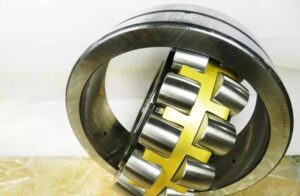
Guide to Choosing the Right Lithium Complex Grease in UAE
Guide to Choosing the Right Lithium Complex Grease in UAE for Unbeatable Performance Discover More In the heart of a region defined by its ambition and extreme climate, the machinery that builds and powers the UAE operates under immense pressure. From the towering cranes sculpting Dubai’s skyline to the massive haul trucks in Abu Dhabi’s industrial zones and the relentless conveyor systems in Jebel Ali Port, every moving part is a critical link in the chain of progress. Protecting these

Lithium Grease UAE – Buy Multi-Purpose Lubricant Grease
Lithium Grease UAE – Buy Multi-Purpose Lubricant Grease Discover More In the relentless engine of the United Arab Emirates’ economy—where monumental construction, non-stop logistics, and a climate of extreme heat and abrasive sand are the norm—the battle against friction and corrosion is perpetual. The integrity of a construction crane’s slewing ring, the smooth operation of a delivery fleet’s wheel bearings, and the silent efficiency of a hotel’s HVAC system all hinge on a single, critical decision: the choice of lubricant.
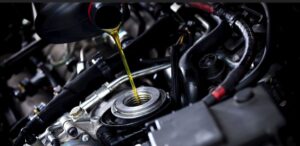
Best CNG Engine Oil in UAE for Cars – Protect Your CNG Engine
Best CNG Engine Oil in UAE for Cars – Protect Your CNG Engine Discover More The automotive landscape in the UAE is undergoing a quiet revolution. As fuel prices fluctuate and environmental consciousness grows, more and more drivers are making the intelligent switch to Compressed Natural Gas (CNG). CNG-powered cars offer significant cost savings on fuel and produce fewer emissions, making them an economically and ecologically sound choice. However, this transition comes with a critical responsibility: understanding that a CNG
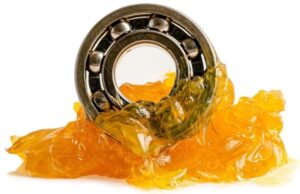
Calcium Sulphonate Grease UAE | High-Temperature Grease
Calcium Sulphonate Grease UAE | High-Temperature Grease Discover More Introduction: The Unforgiving Demands of UAE Industry The United Arab Emirates stands as a global titan of industry and infrastructure. From the sprawling metallurgical plants in Mussafah and the massive port operations of Jebel Ali to the relentless pace of construction shaping Dubai’s skyline and the vast logistics hubs of Al Ain, the machinery that powers this nation operates under extreme duress. Soaring ambient temperatures that regularly exceed 45°C, pervasive dust
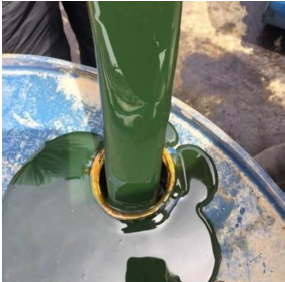
What is Rubber Process Oil? | Guide to Applications, Benefits, and Selection
What is Rubber Process Oil? | Guide to Applications, Benefits, and Selection Discover More In the sophisticated ecosystem of rubber manufacturing, raw polymers are the canvas, but rubber process oil is the essential medium that brings the masterpiece to life. It is the critical component that transforms rigid, unworkable raw materials into the versatile, durable, and high-performance rubber products that define modern industry and daily convenience. For specialists dedicated to chemical innovation and precision, such as the team at Rumanza Lubricants, the science

Which UAE Lubricants manufacturers is Best for High-Mileage Engines?
Which UAE Lubricants manufacturers is Best for High-Mileage Engines? Discover More The sprawling deserts and bustling metropolises of the United Arab Emirates present a uniquely demanding environment for vehicles, pushing engine lubrication technology to its absolute limits. From the scorching summer heat that can cause conventional oils to thin out and lose protective properties, to the endless stop-start traffic of cities like Dubai and Abu Dhabi that promotes sludge and acidic buildup, our cars endure a severe service regimen unlike
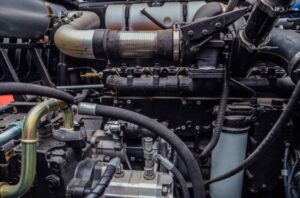
What Vehicles Use Kerasene? A Comprehensive Guide
What Vehicles Use Kerasene? A Comprehensive Guide to Fueling Beyond Gasoline Discover More When we think of vehicle fuel, gasoline and diesel immediately come to mind. They are the lifeblood of our daily commutes, the power behind the trucks that deliver our goods, and the standard by which we measure automotive progress. But venture beyond the everyday, into the realms of high-altitude aviation, rugged agricultural machinery, and groundbreaking space exploration, and you’ll discover a different, equally vital fuel that operates
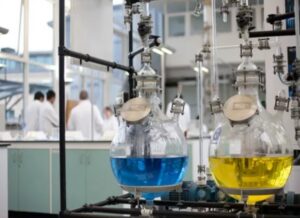
How To Chose Antioxidant Additives in UAE | Industrial Grade Chemicals?
How To Chose Antioxidant Additives in UAE | Industrial Grade Chemicals? Discover More In the heart of a rapidly industrializing region, the United Arab Emirates stands as a beacon of manufacturing, logistics, and heavy industry. From the sprawling automotive workshops of Dubai to the massive petrochemical complexes in Ruwais, the performance and longevity of machinery are paramount. At the core of this operational excellence lies a critical, yet often overlooked, component: industrial lubricants and fluids. These lifeblood substances are constantly

Viscosity Index Improvers UAE – Improve Lubricant Performance
Viscosity Index Improvers UAE – Improve Lubricant Performance Discover More In the heart of the United Arab Emirates, where ambition is matched only by the scale of its infrastructure, the machinery that builds and powers the nation faces a relentless adversary: the climate. The combination of extreme heat, temperature volatility, abrasive dust, and intense UV radiation creates a perfect storm of conditions that relentlessly attack the lifeblood of all mechanical systems—the lubricant. For maintenance managers, plant operators, and fleet owners,

Compressor Oils UAE | Lubricants for Air Compressors
Compressor Oils UAE | Lubricants for Air Compressors Discover More In the relentless engine of the UAE’s economy, where ambition is matched only by the scale of its construction and industry, air compressors are the indispensable workhorses. They are the silent force driving the pneumatic tools that build our skylines, the automated machinery in our factories, the climate control systems in our buildings, and even the processes in oil and gas refineries. Yet, within these critical machines, a component often
